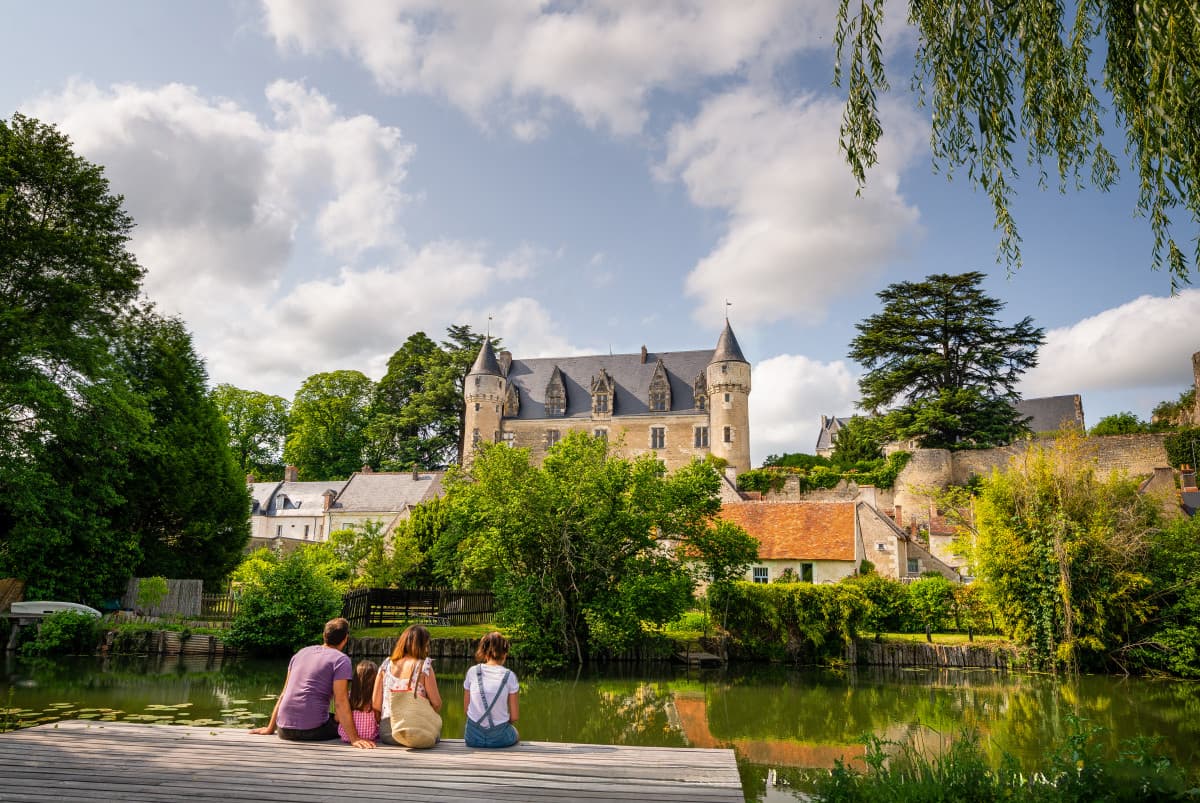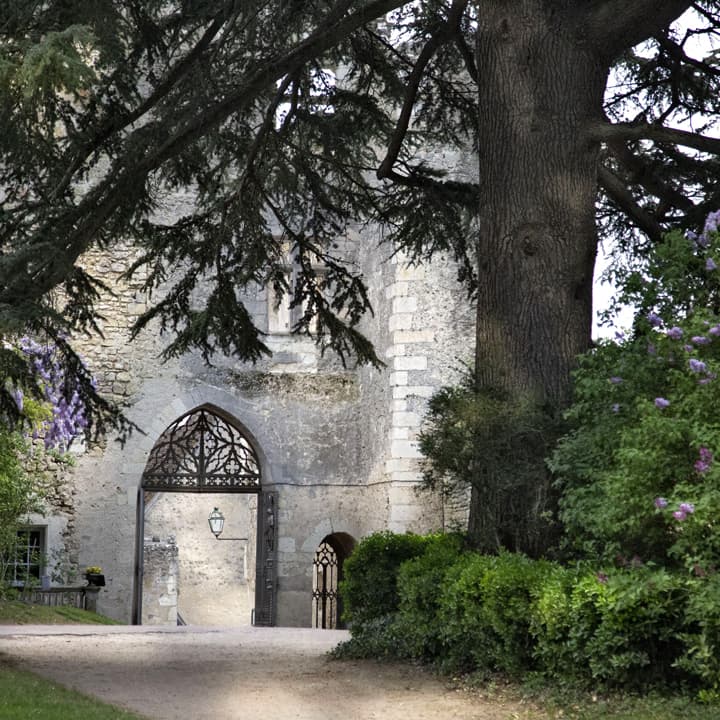
Century-old trees and commanding views over the Indrois Valley
Step into the grounds of Montrésor Castle and let yourself be charmed by the tranquillity of the place.
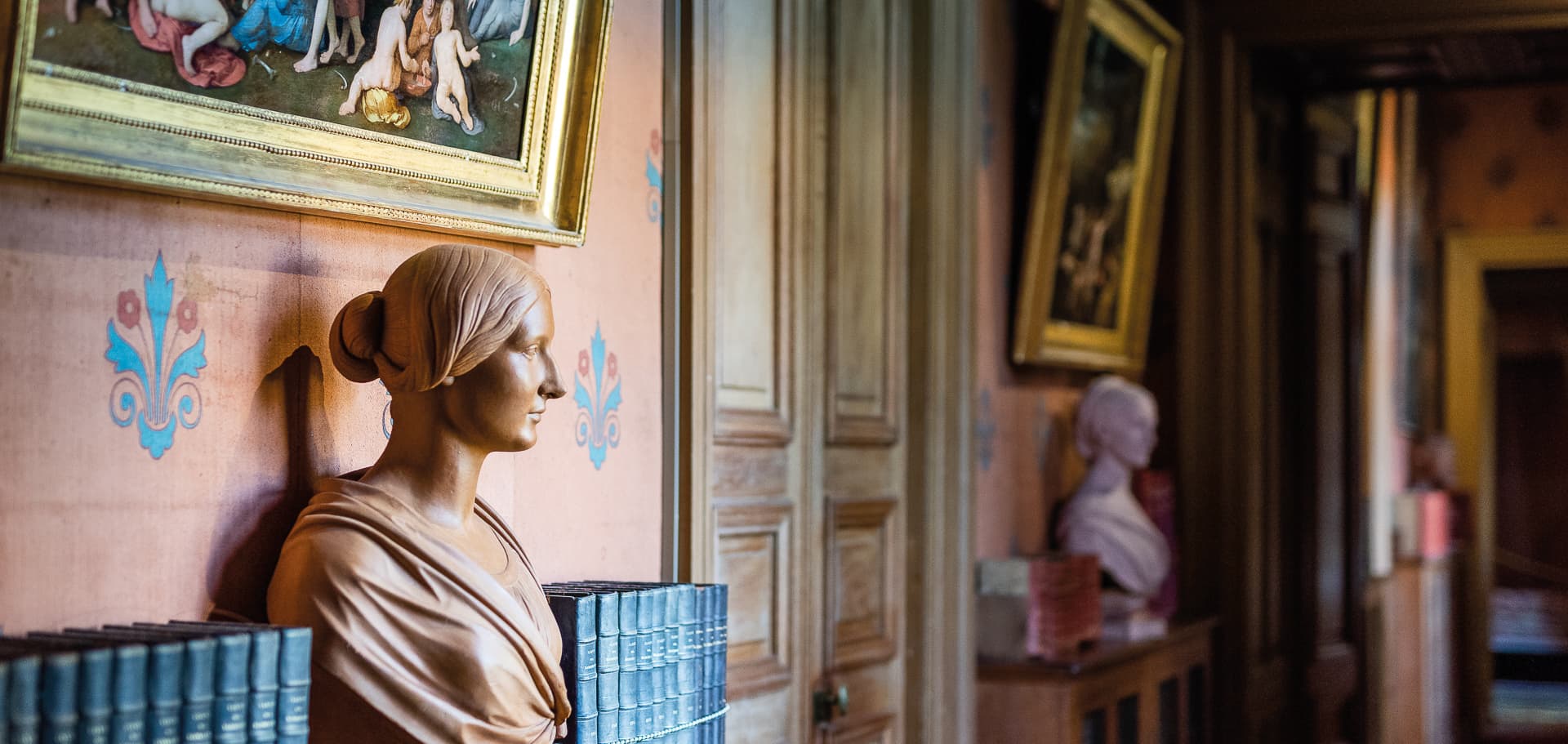
The private Montrésor Castle houses a unique collection of artworks and is fully furnished. Discover the richness of its period interiors. Many objects and paintings from Count Branicki's collection recount significant events in Polish history.
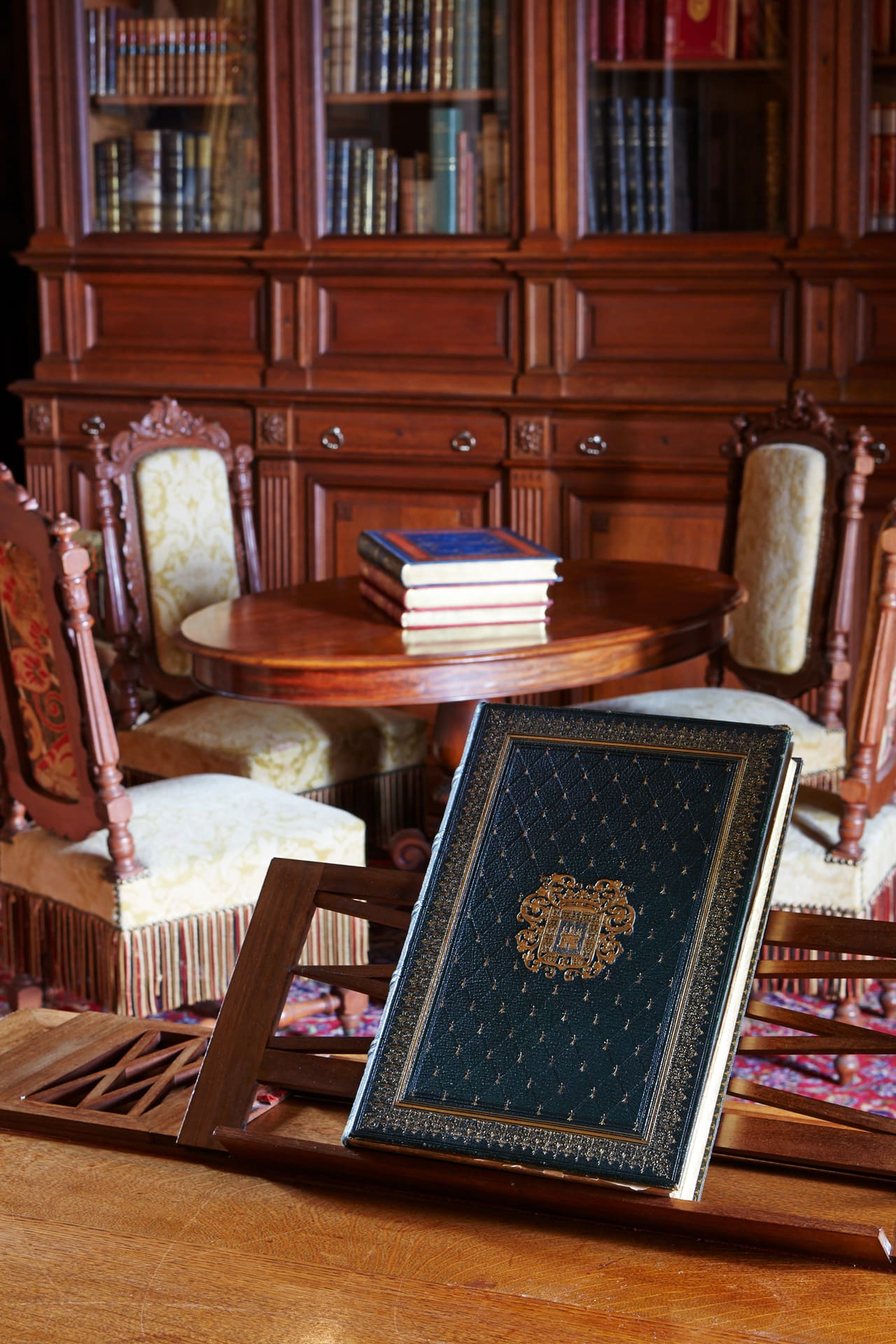
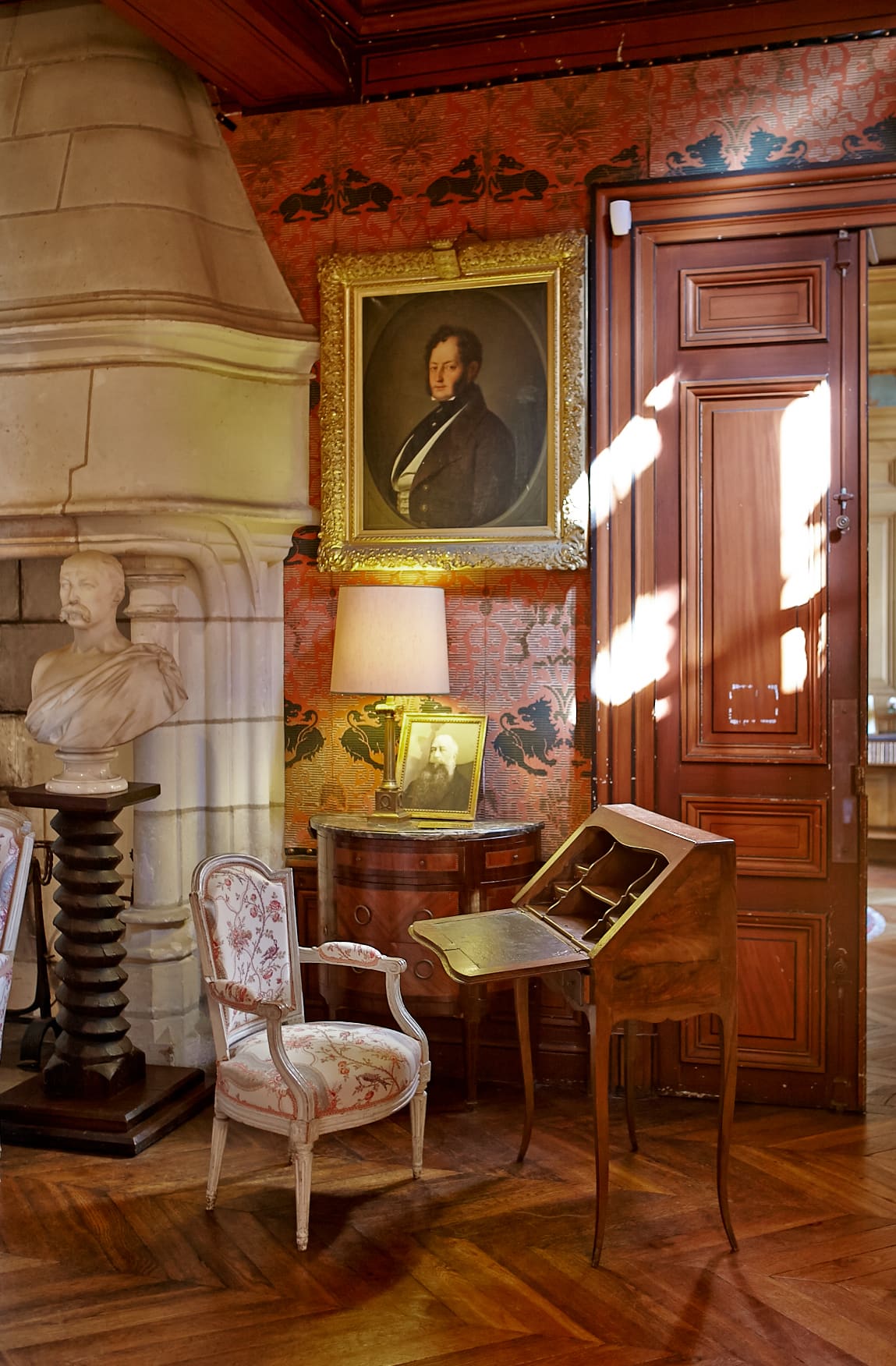
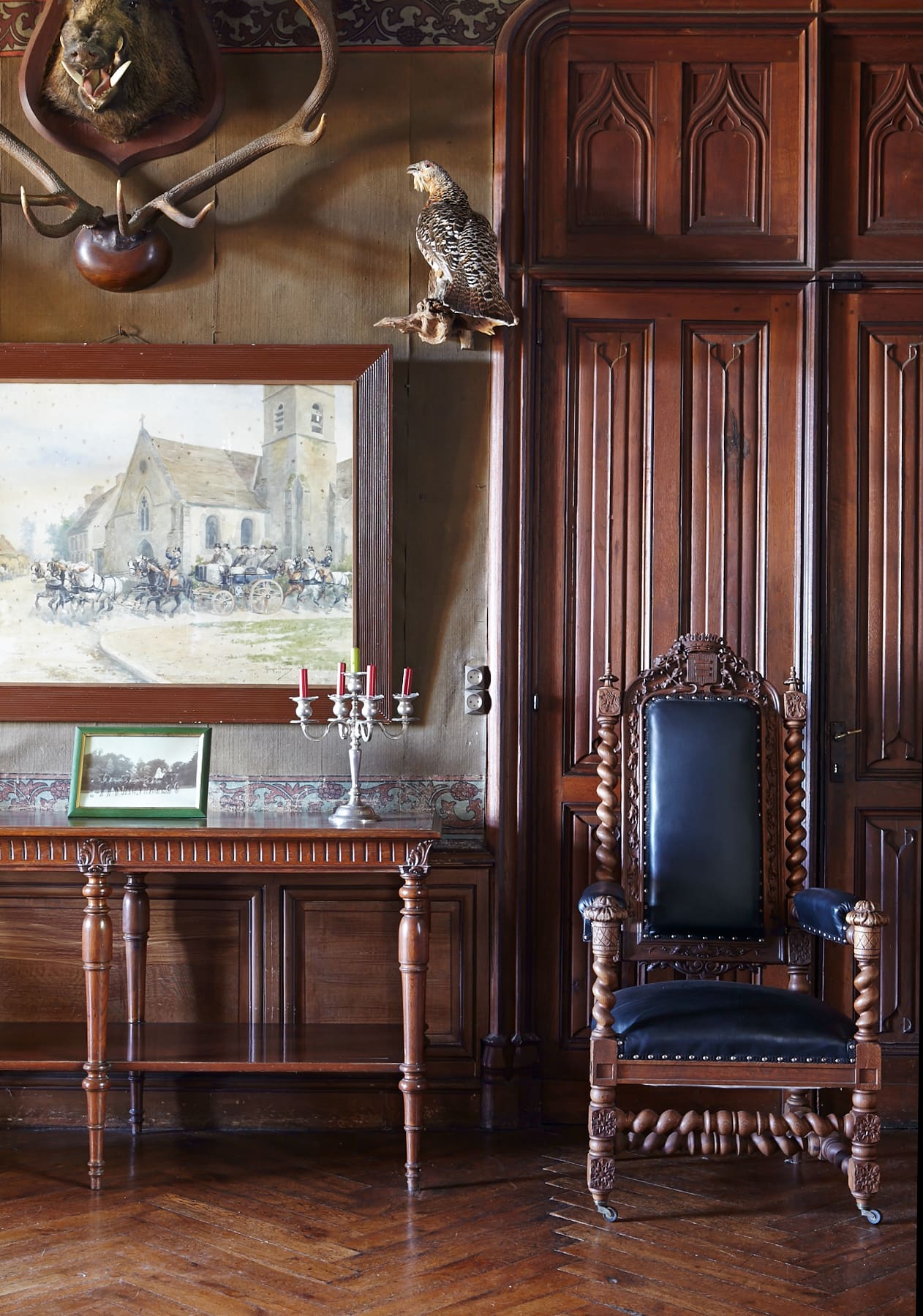
More of a passionate collector than a true collector, Count Branicki enriched the château with furniture in a variety of styles.
The Second Empire style dominates the ensemble, as exemplified by the majestic mahogany staircase acquired at the 1855 World's Fair. Each piece contributes to the château's unique atmosphere.
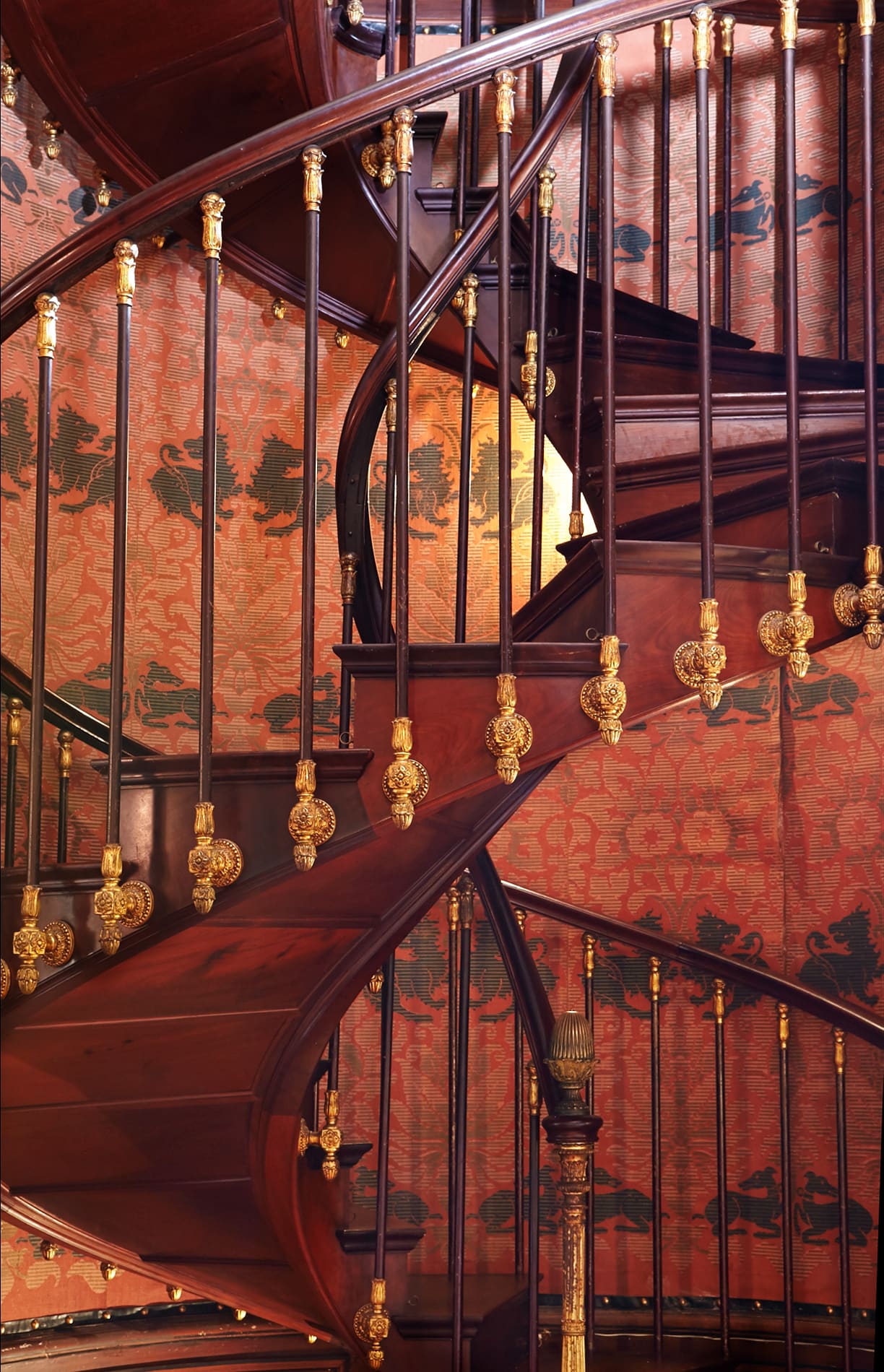
The castle houses a remarkable collection of paintings from the collection of Cardinal Fesch, Napoleon I's uncle. Among these masterpieces, visitors can admire superb ‘Italian primitives’ as well as several family portraits that bear witness to their history and heritage.
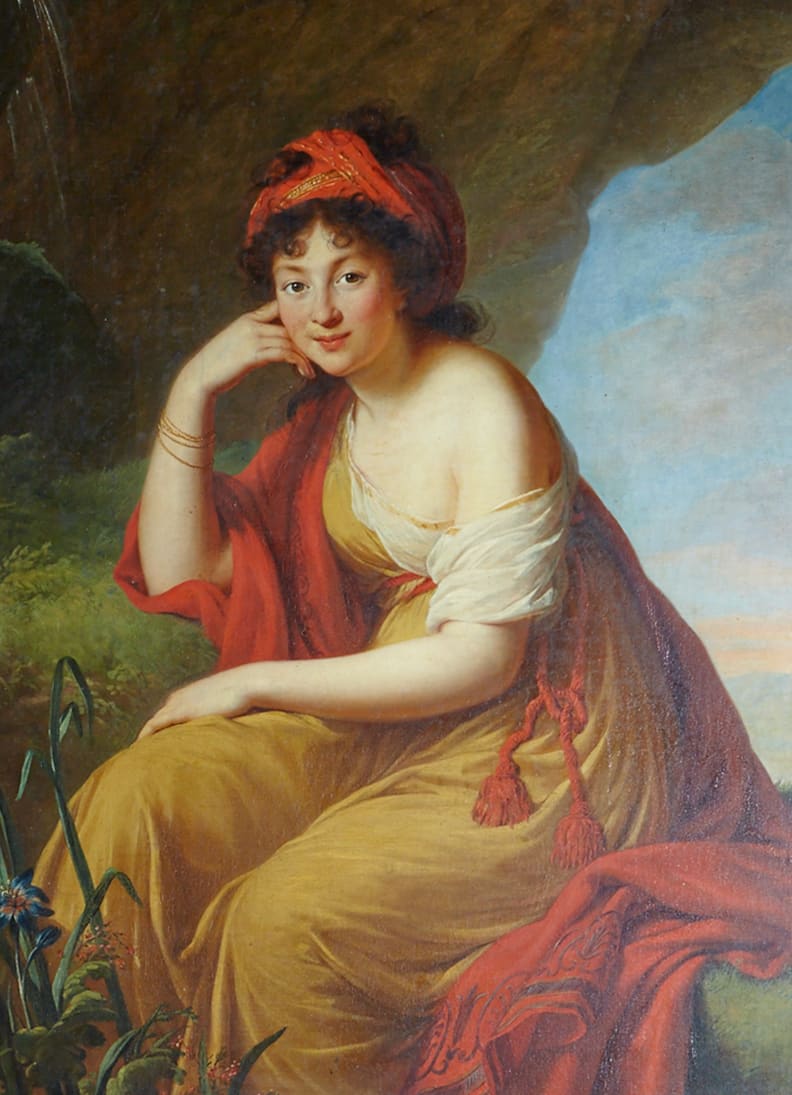
Redesigned in the second half of the 19th century, this romantic park is sure to impress. Admire the many viewpoints and enjoy a pleasant moment in this bucolic setting located in one of the most beautiful villages in France.

Century-old trees and commanding views over the Indrois Valley
Step into the grounds of Montrésor Castle and let yourself be charmed by the tranquillity of the place.
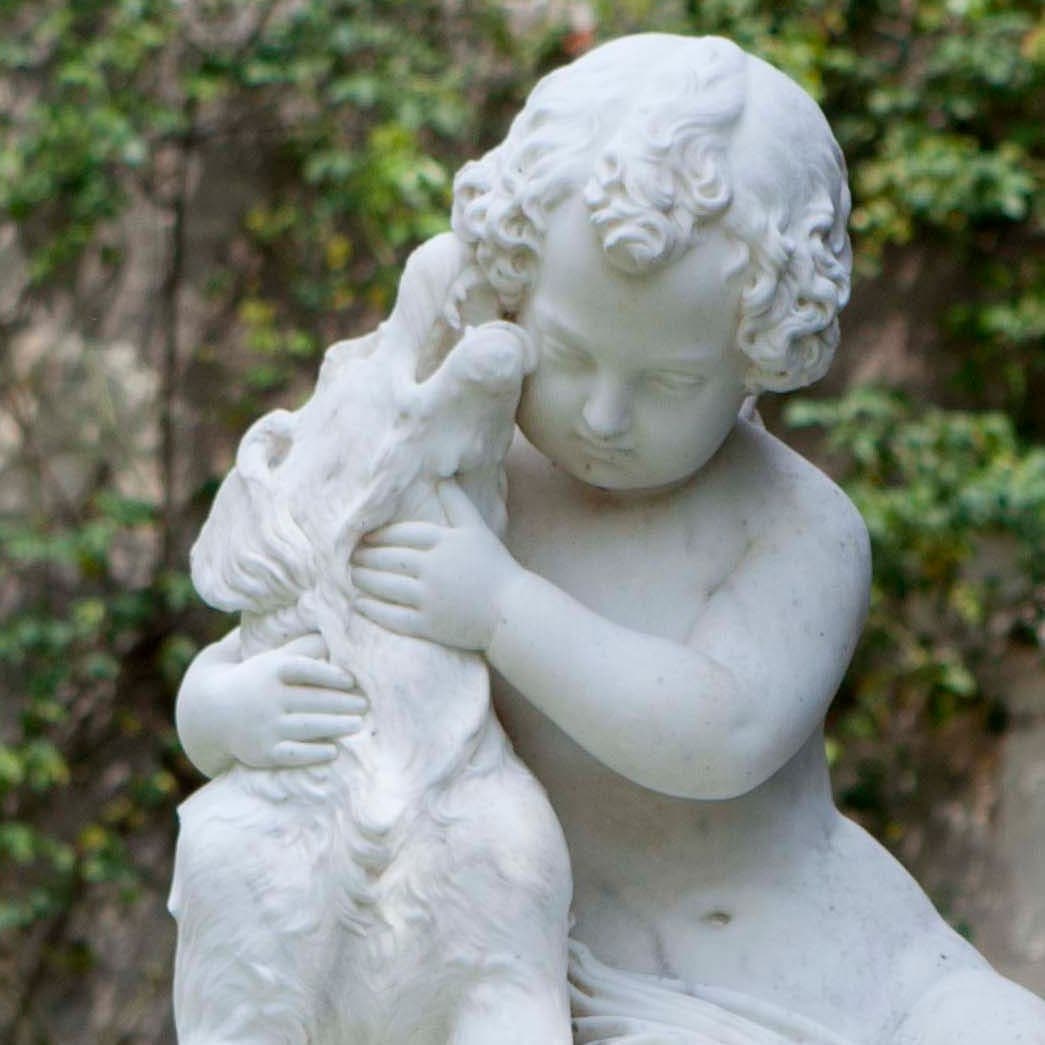
Remarkable sculptures in the park's walkways
One by Constantino Corti, the other by Jules Franceschi, these works contribute to the poetic atmosphere of the place.
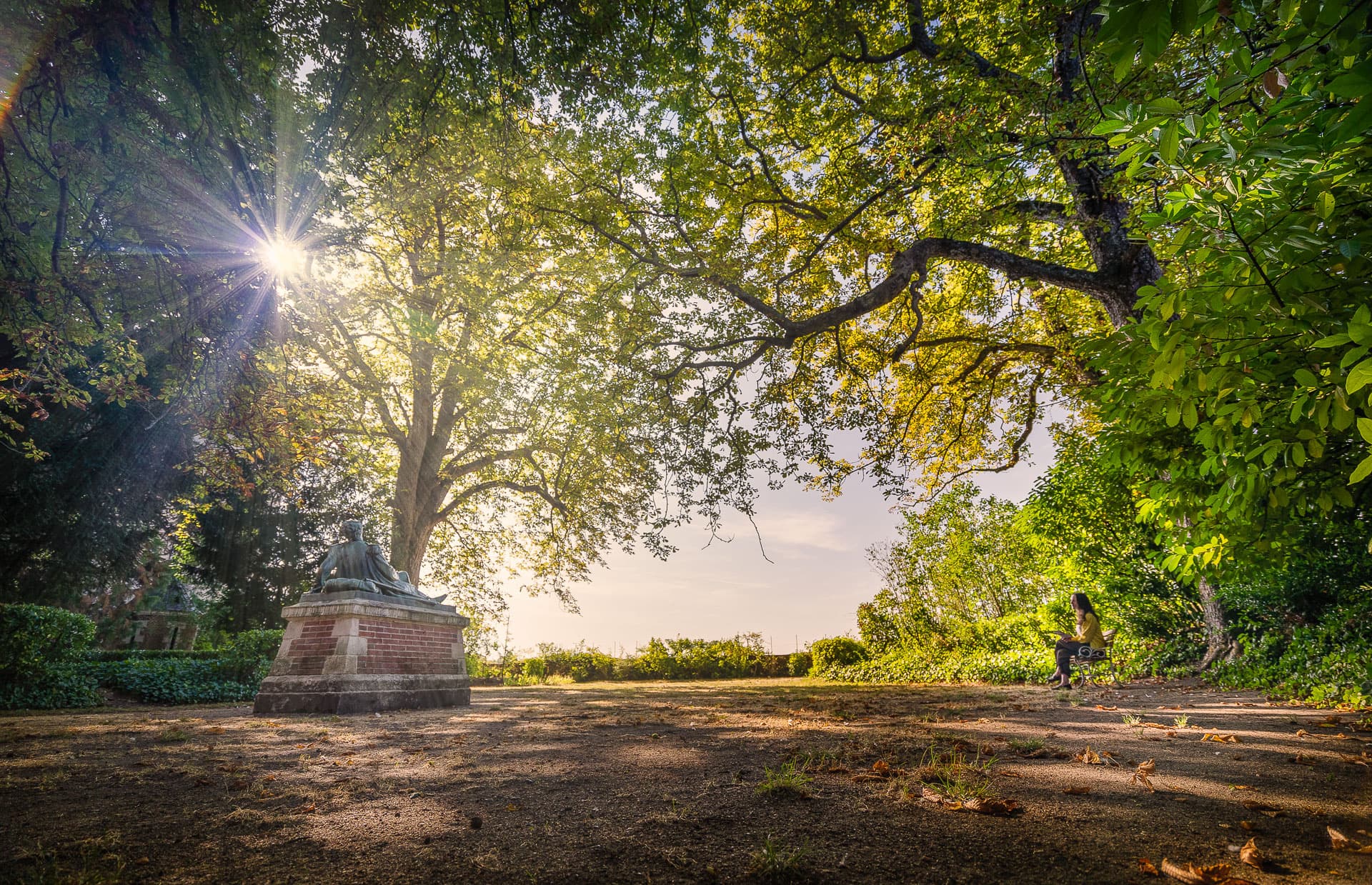
Over a thousand years of history unfold across three significant periods: the Middle Ages, the Renaissance and the 19th-century restoration by Polish Count Xavier Branicki, who gave it its current elegance.
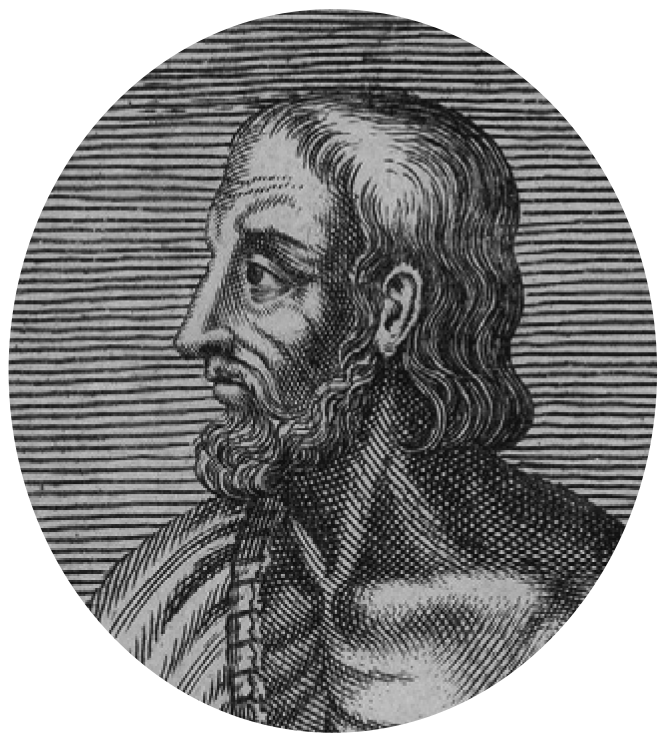
In the 11th century, Foulques Nerra, Count of Anjou, had a fortress built at Montrésor to control access between Loches, Montrichard and Amboise. His captain, Roger, known as ‘the little devil’, supervised its construction on a promontory overlooking the valley.
Rebuilt in 1393 by Jean IV de Bueil, Grand Master of the Crossbowmen of France, the castle took on the appearance of a modern stronghold, with large round towers designed to withstand artillery fire.
Today, the ruins of the keep and the double enclosure still bear witness to Montrésor’s medieval past.
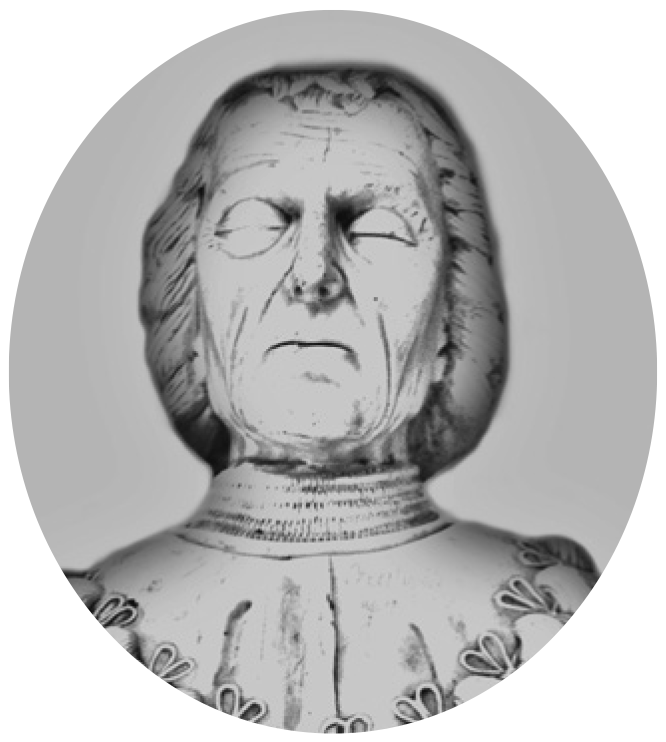
In 1493, Imbert de Batarnay, Lord of Bouchage and close advisor to the crown, acquired the castellany of Montrésor. He chose to build an elegant residence there on the very foundations of the former medieval fortress.
A man of influence, he lived through the reigns of four kings — Louis XI, Charles VIII, Louis XII and François I — and lived to the age of 85. His recumbent effigy still rests in the collegiate church he had built, overlooking the valley.
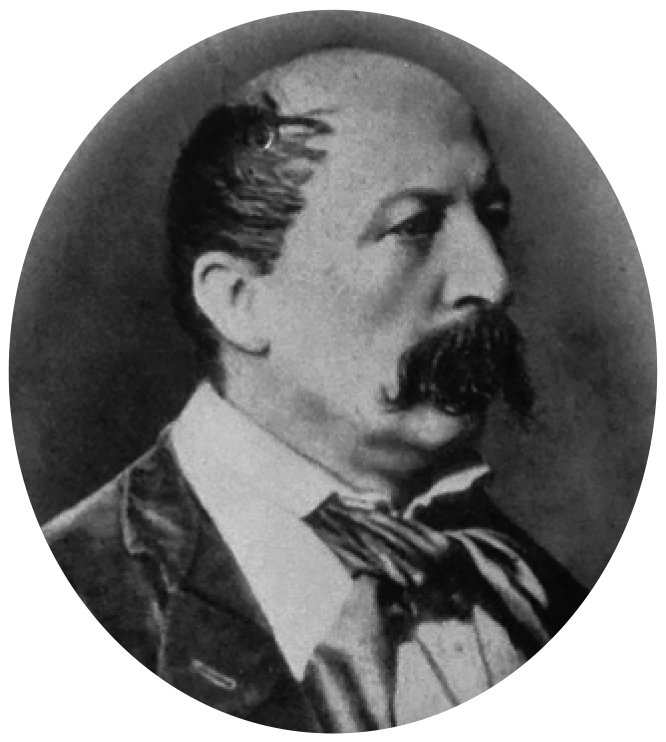
In 1848, Count Xavier Branicki, a Polish aristocrat living in exile and naturalised French citizen, became the owner of the Château de Montrésor. A financier, writer, patron of the arts and close associate of Napoleon III, he embodied the spirit of the 19th century: curious, committed and focused on Europe.
Seduced by the charm of the place, he undertook a complete restoration in the Second Empire style. He brought together works from the Italian Renaissance and 17th-century Dutch masters, notably from the prestigious collection of Cardinal Fesch, uncle of Napoleon I. The château thus became a place that was both intimate and refined.
Today, his descendants continue this family tradition, now in its seventh generation, and invite you to discover its richness.
You can purchase your ticket for Montrésor Castle online. The online ticket office also handles tickets for cultural season events.
Buy your ticket